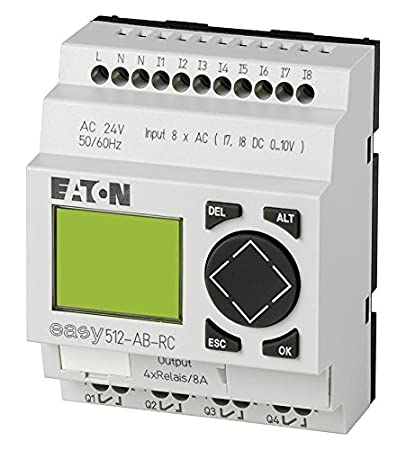Eaton Easy500 Series programmable relays control small applications with up to 12 I/O signals, including lighting, energy management industrial control, irrigation, pump control and HVAC. They ...Read More
Eaton Easy500 Series programmable relays control small applications with up to 12 I/O signals, including lighting, energy management industrial control, irrigation, pump control and HVAC. They include a clock that performs functions like time-based control, timing events or tracking elapsed time and an easyD display for providing an enhanced operator interface. Easy500 programmable logic controllers (PLCs) allow front panel programming for seamless modification and eliminate the need to change the wiring, thus reducing downtime. Read Less
 Change Country
Change Country
